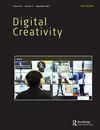推特求助:社交媒体在灾难事件中的作用以及2015年米娜踩踏事件
IF 2.7
4区 艺术学
0 ART
引用次数: 2
摘要
社交网络是灾害中个人与应急机构交换信息的重要沟通渠道。探测灾难信息或“报告”推文的能力将在拥挤事件期间为灾害管理提供许多优势。本研究通过处理事件发生期间和之后7天内(2015年9月24日至30日)发布的推文,探讨了2015年朝觐Mina踩踏悲剧期间的推特行为。统计特性来源于tweet,例如标签的数量、用户提及的数量和链接的数量,以提供这次灾难期间Twitter使用情况的概述。使用两种阿拉伯语自然语言处理工具:Farasa和MADAMIRA,建立了一个分类模型来过滤报道推文。具有径向基函数核的支持向量机在两种工具中都产生了最好的结果(f得分:88%-89%)。研究结果将对那些在阿拉伯语地区管理大型、拥挤的活动(如朝觐)的人有用。本文章由计算机程序翻译,如有差异,请以英文原文为准。
Tweet for help: the role of social media in disaster events and the case of the 2015 Mina stampede
ABSTRACT Social networks are important communication channel where individuals and emergency agencies can exchange information during disasters. The ability to detect disaster information or ‘reporting’ tweets would provide many advantages in disaster management during crowded events. This study explores Twitter behaviour during the Mina stampede tragedy in the 2015 Hajj by processing tweets posted over seven days during and after the incident (24–30 September 2015). Statistical features were derived from tweets, such as the number of hashtags, user mentions, and links, to provide an overview of the use of Twitter during this disaster. A classification model was built to filter reporting tweets using two Arabic natural language processing tools: Farasa and MADAMIRA. A support vector machine with a radial basis function kernel generated the best results in both tools (F-score: 88%–89%). The results will be useful to those who manage large, crowded events such as Hajj in Arabic-speaking regions.
求助全文
通过发布文献求助,成功后即可免费获取论文全文。
去求助
来源期刊

DIGITAL CREATIVITY
ART-
CiteScore
3.10
自引率
9.10%
发文量
19
期刊介绍:
Digital Creativity is a major peer-reviewed journal at the intersection of the creative arts, design and digital technologies. It publishes articles of interest to those involved in the practical task and theoretical aspects of making or using digital media in creative disciplines. These include but are not limited to visual arts, interaction design, physical computing and making, computational materials, textile and fashion design, filmmaking and animation, game design, music, dance, drama, architecture and urban design. The following list, while not exhaustive, indicates a range of topics that fall within the scope of the journal: * New insights through the use of digital media in the creative process * The relationships between practice, research and technology * The design and making of digital artefacts and environments * Interaction relationships between digital media and audience / public * Everyday experience with digital design and artwork * Aspects of digital media and storytelling * Theoretical concepts
 求助内容:
求助内容: 应助结果提醒方式:
应助结果提醒方式:


